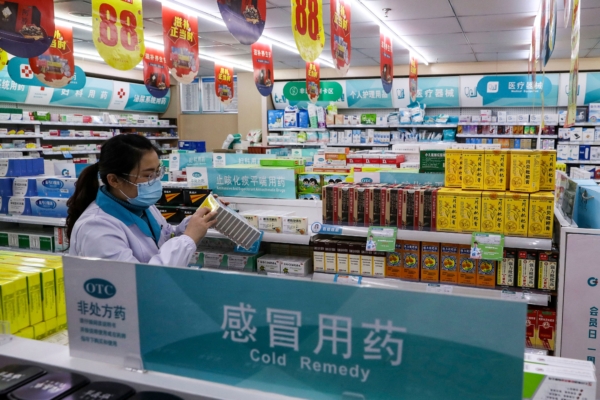In the second quarter of this year, the number of closed pharmacies in China reached 8,792, an increase of over 3,000 compared to the first quarter. Some industry experts believe that as time goes on, the trend of pharmacies closing their doors may become more pronounced.
According to a report by “First Finance” on August 19th, at the 2024 Sippy Conference held recently, Liao Honghui, General Manager of the Commercial Big Data Business Division of Zhongkang Technology, revealed that the growth of the national pharmacy count has started to slow down, with a significant increase in closures. Data from the Zhongkang Pharmacy Chain System shows that the number of closed pharmacies nationwide increased from 6,778 in the first quarter of 2024 to 8,792 in the second quarter. The number of closures exceeded 15,000 in half a year.
In response to this, Huang Xiuxiang, former Secretary-General of the Hunan Pharmaceutical Distribution Industry Association, stated that the increase in the number of pharmacy closures is due to various reasons. Firstly, there is an oversupply of pharmacies, leading to a decreased market share for each pharmacy. Secondly, the consumer base for pharmacies is mainly comprised of middle-aged and elderly people. After the reform of individual medical insurance accounts, the income of these groups decreased, making them more sensitive to drug prices. Additionally, the online purchase of medical insurance drugs has diverted some offline customers, which has squeezed the profit margins of pharmacies.
The Communist authorities carried out a reform of individual medical insurance accounts in 2021. After the reform, the proportion of unit contributions and unified fund allocations into individual accounts decreased, directly resulting in a negative growth of individual medical insurance account income for the first time in 2023. According to the 2023 National Medical Insurance Statistics Bulletin of the Communist Party, the income of individual medical insurance accounts decreased from 763.3 billion yuan in 2022 to 635.1 billion yuan in 2023.
Following the reduction in individual medical insurance account income, the amount spent by these account holders on purchasing drugs from pharmacies has correspondingly decreased. Data from the Commercial Big Data Division of Zhongkang Technology released at the 2024 Sippy Conference in the “Crossing Point – China Pharmaceutical Retail Industry Annual Report” shows that in 2023, there was a 9% year-on-year decrease in the amount spent by individuals buying drugs from pharmacies using medical insurance accounts. Specifically, the elderly group saw a double-digit decline in spending at retail pharmacies, and in 2024, it is expected that the annual expenditure of medical insurance account holders at retail pharmacies will further decrease by 6%.
Furthermore, a report by “Time Finance” on August 16th indicated that looking at the operational data of chain pharmacies, in the first quarter of 2024, Laobaixing Pharmacy achieved a revenue of 5.539 billion yuan, with a mere 1.81% year-on-year increase, and a net profit of 321 million yuan, a 10.27% year-on-year increase. Dacanlin achieved a revenue of 6.752 billion yuan, a 13.54% year-on-year increase, albeit significantly lower growth compared to the same period in 2023, and a net profit of 398 million yuan, a 19.79% year-on-year decrease. Yixintang experienced negative growth in revenue and net profit in 2023, achieving a revenue of 5.1 billion yuan in the first quarter of 2024, a 14.96% year-on-year increase, and a net profit of 242 million yuan, only a 1.03% year-on-year increase.
Regarding the future direction of pharmacies, Huang Xiuxiang believes that with the passage of time, the number of closed stores in the industry will surpass the number of new openings. Gao Yi, Chairman of Yifeng Pharmacy Chain Co., Ltd., also believes that the number of pharmacy outlets will trend downward, a trend that may become more pronounced in the future.

